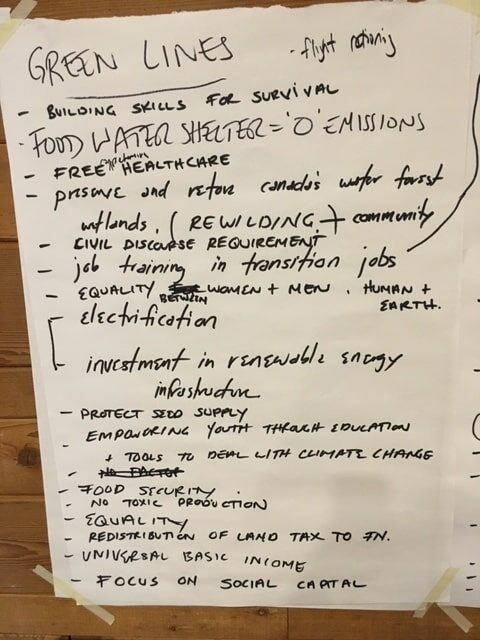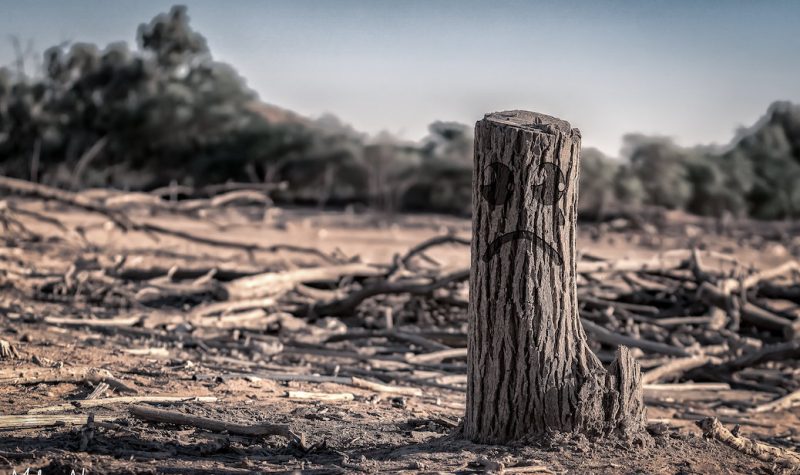By Roy L Hales

List of actions proposed when Canada’s Green New Deal came to Mansons Hall on Friday, May 14, 2019. Photo courtesy of Ashley Zarbatany.
After the informal launch of Climate Hope a year and a half ago, the organization was sidelined by the COVID-19 pandemic. Ashley Zarbatany was hired to get it going again and her first project will be drawing up a Climate Action Plan for Cortes Island.
“What exactly do we need to do as a community to survive, and thrive, through what is coming. Through the climate crisis; through climate breakdown; to mitigate as much as possible so that we can forego the extreme worst case scenarios and avoid them,” said Zarbatany.
Over the course of the next year, Climate Hope will be holding townhall meetings, sending out surveys and holding a series of conversations.
“Most of it will have to be done online or over the telephone, because of COVID[-19]. That poses a different challenge, but we can make it happen regardless and we have to make it happen because time is running short,” said Zarbatany.
“The science behind climate change is very dire. In 2018, which isn’t the most recent finding, the Intergovernmental Panel on Climate Change (IPCC) reported that we needed to halve global greenhouse emissions to avoid going over 1.5 per cent of global warming. At this point, things are happening so quickly. The Arctic is melting. It is accelerating at a pace that scientists were not expecting and so it is really important that we do everything we can to reduce our greenhouse gas emissions.”
On Cortes, Zarbatany said we need to figure out where our emissions come from and what we need to do to reduce them.

Wood for stoves, an item that may be phased out if Cortes adopts a Climate Action Plan. Photo by Roy L Hales.
In the podcast above, she mentions three obvious sources of Cortes Island’s emissions:
- BC Ferries
- Gas burning automobiles
- Wood burning stoves
Zarbatany stressed the fact residents are blessed to be in BC, where there is abundant hydro electricity, “which is carbon neutral.”
“We should be using that to the best of our abilities. So how do we do that in a way that is cost efficient, accessible to everyone regardless of income levels? How do we get electric heat pumps for everyone? That is ideal for our environment! We need to electrify everything in places where it makes sense,” she said.
Towards a Climate Action Plan
Zarbatany is looking for Cortes organizations that wish to partner with Climate Hope and people who want to draw up a Climate Action Plan for the island.
“Part of the process of the Climate Action Plan will be determining first, and foremost, how many tons of emissions do we put out as a community? Where are the major sources of emissions? And how can we go about creating alternatives?” she asked.


